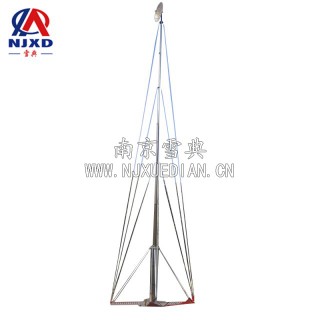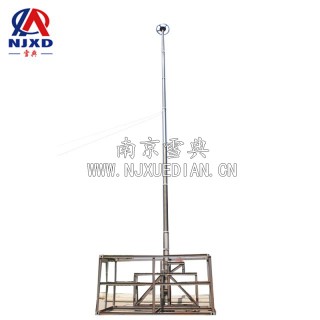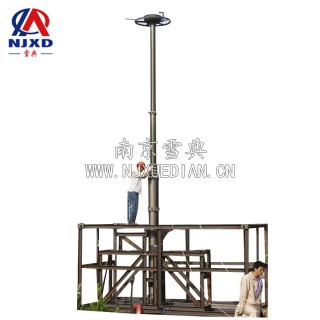NEWS
Technical development of mobile communication
Time:2021-01-11 View:

Key technologies of mobile communication information development
Power control technology is one of the keys of mobile communication information technology. This technology mainly adopts the core technology of CDMA system. Through the self-interference system, the "near-far effect" caused by the signal station transmitting signals, thus improving the quality of mobile communication. Through open-loop power control technology and closed-loop power control technology, the communication efficiency of mobile stations and base stations is improved.
"Code" technology is another key technology in mobile communication information technology. This technology upgrades the capacity and anti-interference capability of power control technology, therefore, the accuracy of signal control connected to the mobile communication network is improved, and the speed of signal switching is improved. This technology provides the power control technology of mobile communication with mutual correlation capability and coding optimization technical scheme through PN code. Through m sequence and address, improve the accuracy of mobile communication technology for user identification.
The key links in mobile communication technology also include cross fade technology and Huayin coding technology. These two technologies can ensure smooth cross fade between different mobile base stations by adjusting the coverage network of mobile communication signals and the adaptive threshold, reduce the negative impact of noise environment on mobile communication information transmission and provide users with clearer voice.

Technological development
Simulate cellular services
In 1984, the simulated cellular business was completed and put into operation. It can reuse the same frequency in different areas of the city and town. The repeated use of frequency in non-adjacent areas is an innovation to increase the capacity of the cellular. Bell Labs at AT&T has developed the first generation of cellular service technology.
Second generation digital communication service (2G)
Overview
The second generation of digital communication service is still a widely used form worldwide. 2G services provide more capacity than analog mobile services. In the same amount of spectrum, reuse access technology can carry more voice traffic. The two most popular 2G air interfaces in the world are golden ball mobile communication system (UGSM) and Code Division Multiple Access System (CDMA).
GSM system
The advantage of GSM lies in its wide popularity worldwide. GSM is a digital cellular communication standard, which adopts time division multiplexing (TDM). Currently, T-Mobile and AT&T mobile operate GSM networks in the United States.
CDMA system
CDMA technology allocates a unique code for each call to reuse the spectrum, which is also called spread spectrum technology. Each channel will be extended to 1.25MHz bandwidth when it is transmitted. CDMA can provide language data delivery at a very low cost and make it easier for operators to upgrade to 3G networks. Qualcomm in the United States has an absolute leading position in the commercial field of CDMA technology.
Third generation digital communication service (3G)
Overview
The demand of operators for larger capacity and more revenue-generating functions for users is the main driving force for the development of 3G networks. 3G standards are collectively referred to as IMT-2000 international mobile communication standards, of which WCDMA and CDMA2000 are the most widely used. WCDMA, TD-SCDMA, and CDMA2000 are common 3G standards.
WCDMA service
WCDMA is the 3G service that most GSM operators choose to build when upgrading from 2G to 3G. The biggest expense from GSM network to WCDMA network is to build a new base station. 3G networks use higher frequency spectrum, which means that more base stations are needed in the same area to ensure network coverage. Since WCDMA is based on code division multiple access rather than time division intervention, it also needs to build new infrastructure than upgrading GSM network to complete 3G services.
Fourth generation digital communication service (4G)
Overview
The standards of the 4G protocol are formulated by the Radio Communication Group of the International Telecommunication Union. The Protocols of the Kerberos and LTE are often referred to as 4G services. One of the main goals of developing 4G technology is that mobile devices have the ability to accommodate the expected number of mobile data transmission and to use mobile networks to achieve broadband Internet access.
LTE network
The LTE core network is simply called the Evolved Packet Core Network. The LTE core network function is divided into three functional elements: Mobility Management Entity (MME), Service Authority (SGW), packet data network gateway (PGW), PGW and SGW are responsible for sending 2G and 3G network traffic and LTE traffic to the Internet and other data networks.
Core Technology
Access mode and multiple access scheme, modulation and coding technology, smart antenna technology, MIMO technology, IP-based core network, multi-user detection technology.
Advantages
Fast speed, wide spectrum, high quality, high efficiency, flexible communication, good compatibility and value-added services.
